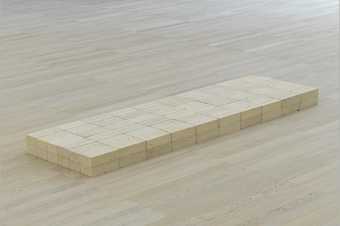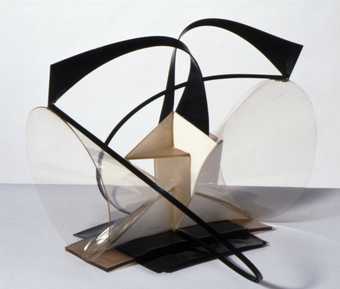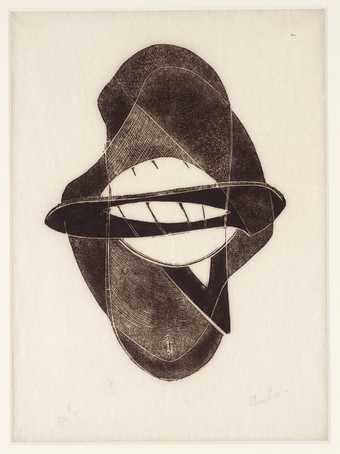
Carl Andre
Equivalent VIII
(1966)
Tate
I am currently in the midst of writing a book on Carl Andre’s poems and sculptures, so when I read through the list of issues the Steering Committee outlined for discussion, my mind immediately turned to the occasions when Andre has chastised museums for installing replicas, or ‘forgeries’ of his works. What light do these episodes throw on the larger debates surrounding replication?
Well, the museums in question believed they were acting in good faith; they were simply pursuing what they assumed to be in the ‘spirit’ of Andre’s working practices. But in the eyes of the artist, the results were simply unrecognisable as his. On one famous occasion in the mid 1970s Andre completely disowned a recently purchased piece that the Whitney had included in their bicentennial blockbuster Two Hundred Years of American Sculpture, because he deemed it insensitively installed. When the Whitney refused the artist’s request to withdraw the sculpture from their displays, he reacted by proclaiming 29th Copper Cardinal to be a ‘corpse’.1 And to force the point, he had the sculpture remade, displaying it in his own counter-exhibition, in an ugly, disused warehouse space in downtown New York. So for one month in the spring of 1976, intrepid enthusiasts of contemporary sculpture had the chance to visit two identical versions of 29th Copper Cardinal, both made from identical copper plates, and both passing as Carl Andre sculptures.
But when, in the early 1990s, a gallery in Los Angeles decided to remake one of Andre’s sculptures, rather than paying for the original to be shipped in, Andre reacted with indignation, deeming the newly forged work to be a forgery.2
If you are of the opinion that these episodes really only go to show that artists like Andre always want to have it both ways, then you are not alone. More than one commentator has pointed out that although Andre might willingly have embraced the logic of anonymous mass production in his working practices, never has he been wholly prepared to relinquish full or absolute authorial control over the finished work. From this perspective, the artist’s need to sanctify personally the final installation only looks like a failure on his part to follow through on what might be thought to be the radical implications of the work’s initial premise.3
But in this particular artist’s case, Andre’s relation to replication is hardly self-evident. (In fact, when is an artist’s view on replication ever ‘self-evident’?) ‘We live in a world of replicas,’ Andre once exclaimed to an interviewer in 1972, ‘and I try desperately in a world of replicas to produce things that are not replicas of anything.’4 That might sound slightly surprising coming from an artist who has premised his entire artistic career on capitalising on the opportunities that industrialised mass production might offer for modern sculpture. Think of the eight sand-lime brick sculptures that Andre made in 1966: the Queens factory that supplied them boasted fully automated production facilities for manufacturing some fourteen million of them annually. Andre’s eight sculptures used just under a thousand. Each work consisted of 120 bricks, and they were stacked into simple rectangular formations across the gallery floor. They were called the Equivalents. But even though this is a set of works that appears to embrace the possibilities of unlimited substitution or exchange, it is important to recognise that sculptures such as these are also premised on a very powerful injunction against replication. The work might invite fantasies of disassembling the bricks or even rebuilding the sculptures in alternate variations; yet were a museum or a collector to change the arrangement of any of the sculptures, or even exchange or substitute any brick for a new one, then this would result – in Andre’s eyes – in an end to his work. Andre’s embrace of the logic of mass production comes, then, with certain crucial provisos. Or to put it another way, he makes works that appear to endorse unlimited substitution and exchange, but they are always also premised on a very powerful counter-investment in singularity and uniqueness.
Grasping both of these aspects of Andre’s art is one of the themes I am exploring in my present work. But it is also relevant in the context of these debates because it evokes a thematic that recurs again and again within modernity – one in which art is distinguished from the mass-produced object in terms of its originality and singularity. Fair enough, that might not sound like an especially ground-breaking observation. But often it is not emphasised sufficiently that the distinction between the mass-manufactured object and the work of art is one that is often upheld by commentators by insisting that the difference is also one of temporality. Let me evoke just two such writers who illustrate what I mean.
One of the most common themes in Ruskin’s essays is that art should always be not only unique, but also timeless and permanent. For instance, when he writes about the art of engraving he argues that the essence of the form is not ‘multiplicability’, but durability: it is about ‘the cutting into a solid substance for the sake of making your ideas as permanent as possible’.5 Art ought never to be made from perishable materials, he asserts, and he rails with distress when he reads in Vasari that Pietro di Medici once commissioned Michelangelo to make for him during one especially cold Florentine winter a snowman. For Ruskin, Pietro’s brief was the apogee of irresponsibility, and so he pleads with the modern patrons of the arts that they ensure that they always commission their artists and builders to work solely with materials that will endure from generation to generation.6
It is unlikely that Ruskin would have approved of Naum Gabo’s use of cellulose acetate. The materials Ruskin references in his examples are all natural substances that predate modernity – such as gold, silver or oak. Synthetic or ersatz materials are – by definition – materials that are designed for the purposes of consumption, in that they are replacements for other substances. As Esther Leslie has recently stressed, it was industrial waste that first permitted the emergence of this parallel world of synthetics, fakes and substitutes. She also points out that this became necessary because, with the arrival of industrialisation, humans start to consume resources and nutrients in the earth without replacing them.7
These, then, are the broad, underlying circumstances that contribute to making art’s durability appear such a positive and unique value. ‘From the viewpoint of sheer durability,’ writes Hannah Arendt in her 1950s essay ‘The Crisis in Culture’, ‘art works clearly are superior to all other things.’ Why? Because they are the only things that have no function ‘in the life process of society’: they are not made to be ‘consumed like consumer goods’ and therefore they are not intended to be ‘used up like objects’.8 Of course, unlike Ruskin, Arendt is never prescriptive as to what materials artists ought to use, yet like him she too holds the work of art to stand removed from the standards and expectations that govern the mass production of commodities. And like Arendt, Andre also takes it as a given that the work of art must be deliberately withdrawn from this process of consumption, in spite of the fact that the materials he uses are originally made to fulfil wholly functional purposes.
But how does all this impact on the role of the museum? As Philip Fisher has suggested, museums have always become increasingly central in cultures touched most deeply by the factory system. As objects appear ever more short-lived and geared to an ongoing series of inventions and improvements, museums become ever more skilled in preservation/9 These places become storage areas for authenticity and uniqueness per se, for objects from any culture or period that have been designated as ‘irreplaceable’ or singular. One of their primary responsibilities has been to maintain their holdings in a state so that they would never deteriorate or change, and in upholding the preciousness of their collections they also become the institutional expression of art’s value in providing a counter-world to the realm of the factory-produced, mass-manufactured object.10 Invariably, museums go about stabilising ephemerality, so that when an institution finds itself attempting to conserve a work of art made from a synthetic substance that is destined to collapse and decay, it finds itself torn between competing commitments.
What we perhaps need is a greater sense of how ephemeral, synthetic materials and the demand for art’s durability and permanence are both implicated and grounded in the same technologies of modernity.


